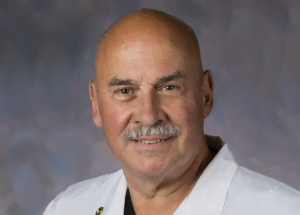By Paul Casamassimo, D.D.S., M.S.
From the Winter 2021 Journal of the Colorado Dental Association
 The COVID-19 viral pandemic has brought infection control front and center in dental practice. Most attention has been with viral transmission through contact and aerosol in our dental world; but in the public sector, the longevity of virus contamination on various surfaces has been a concern and hand and surface cleansing have partnered with social distancing in efforts to control spread. In dental practices, surface disinfection is a standard protocol; but an area that has gained less attention has been dental material packaging, distribution, and handling. This brief article talks about how we use, disinfect, and minimize cross-contamination of dental materials.
The COVID-19 viral pandemic has brought infection control front and center in dental practice. Most attention has been with viral transmission through contact and aerosol in our dental world; but in the public sector, the longevity of virus contamination on various surfaces has been a concern and hand and surface cleansing have partnered with social distancing in efforts to control spread. In dental practices, surface disinfection is a standard protocol; but an area that has gained less attention has been dental material packaging, distribution, and handling. This brief article talks about how we use, disinfect, and minimize cross-contamination of dental materials.
Some dentists continue to use materials dispensed from bulk stores. The obvious benefit is cost savings. Use of bulk materials is on an as-needed basis at point of use, or in increments prepared ahead of time and packaged by staff for use when needed. Hopefully, the practice of replacing dispensed, but unused, bulk materials is not common, if done at all, due to the risk of wider contamination. Yet, bulk use can still have contamination risks all along the use chain. The first risk is with the material container itself. We may naively believe that suppliers clean and sterilize containers and packaging, but that is not always true. In a small study I did several years ago, almost half of bulk packaging yielded pathogens. As we have learned with COVID-19, the supply chain offers ample opportunity to add contamination even if supplies leave the manufacturer in a clean state. Dispensing in the office requires strict attention to surfaces, instruments, personnel barriers, sterile receptacles, and storage. Expiration of self-packaged materials, and insurance of packaging barrier effectiveness add to the challenges. Unless a practice can assure all of these, there is the assumption of contamination and possible transmission of infectious agents.
Unit dosing is growing in acceptance in routine dental care, for obvious reasons of convenience and greater assurance of contamination control. The downsides are cost and waste, and if you are environmentally conscious, addition of still more plastic to our environment. Even unit dosing has its risks if not done properly. Some unit dosing is not really “unitized” and is really just packaging for easy dosing for multiple patients. Some unit dosing still requires decontamination prior to use. Don’t assume that a dispenser in a plastic container is sterile, unless so stated. Unit dosing often also has expiration dates, which need to be accounted for in storage and utilization. Cleaning and disinfecting can be challenging; by definition, unit dosing means “one-and-done,” and most are not meant for reuse. Dentists may want to salvage remaining material and use what’s left for another patient, but in an absolute sense, that isn’t intended. The recent furor over aerosol in the COVID-19 crisis suggests that if material is to be saved for later use, rigorous decontamination and preferably separation from the active treatment area be in place, which may not be possible for all materials. A best practice has to be to “choose and use” only single use, single patient materials. While manufacturers may claim that post-treatment disinfection is possible, it is technique sensitive and effectiveness can’t be assured.
As a result of the pandemic, we may be required to adhere in the future to a medical-surgical standard for cleanliness that includes mandated one-use products, and the era of bulk-dispensing may end. My advice to dentists reading this is to begin a thoughtful process of introducing unit-dose materials into your practice and analyzing what it means from a safety, efficiency and cost standpoint. The question of tighter control over potential transmission of minor and major infectious diseases inadvertently via vectors known to be controllable, is one of when not if, as a result of the COVID-19 pandemic.
Paul Casamassimo, D.D.S., M.S., is professor emeritus in the Division of Pediatric Dentistry at the Ohio State University. He is former editor-in-chief of the American Academy of Pediatric Dentistry (AAPD) and its journal, “Pediatric Dentistry,” and a past-president of AAPD. He is currently the chief policy officer of AAPD. Contact him at paul.casamassimo@nationwidechildrens.org.

